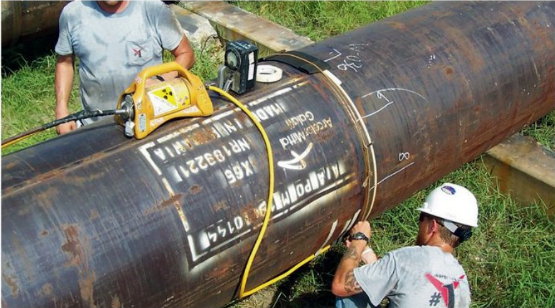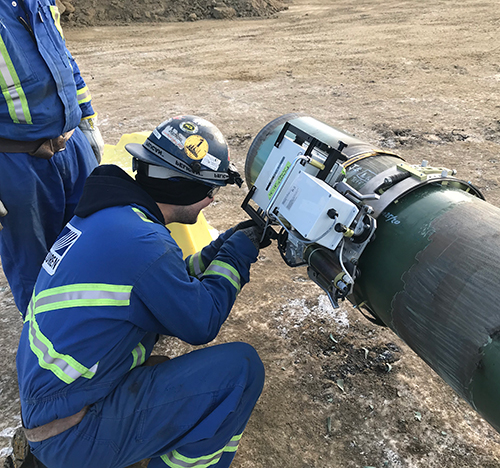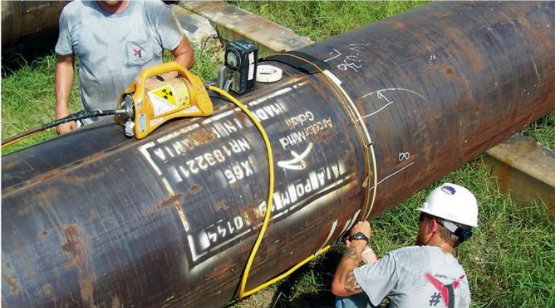- Industrial Radiographic Testing (RT) makes use of X-ray or gamma radiation to create images that can show defects hidden inside the material. This technology is widely used to ascertain material integrity of welds, castings, piping, machined parts, pressure vessels and other objects.
- The method is fully non-destructive and surface preparation of the test piece usually isn't necessary. In many cases, RT can also be used to inspect industrial installations that are in operation.
- X-ray testing is possible for materials with a maximum thickness of 50 millimetres and gamma ray testing is possible for materials with a thickness varying from 10 to 120 millimetres.



Radiography advantages:
- Virtually no surface preparation is required
- Volumetric: both surface and sub-surface indications can be found
- Suitable for inspection of assembled components
- Suitable for in site and on-stream inspections
- Suitable for many different material types
- Permanent record deliverables (film or digital file)
Radiography limitations:
- Hazardous ionising radiation requires creation of safety perimeter
- Relatively expensive equipment
- Relatively slow inspection process
- Sensitive to flaw orientation
- Usualy not possible to determine depth of indications
- Two-sided access to test object is required



